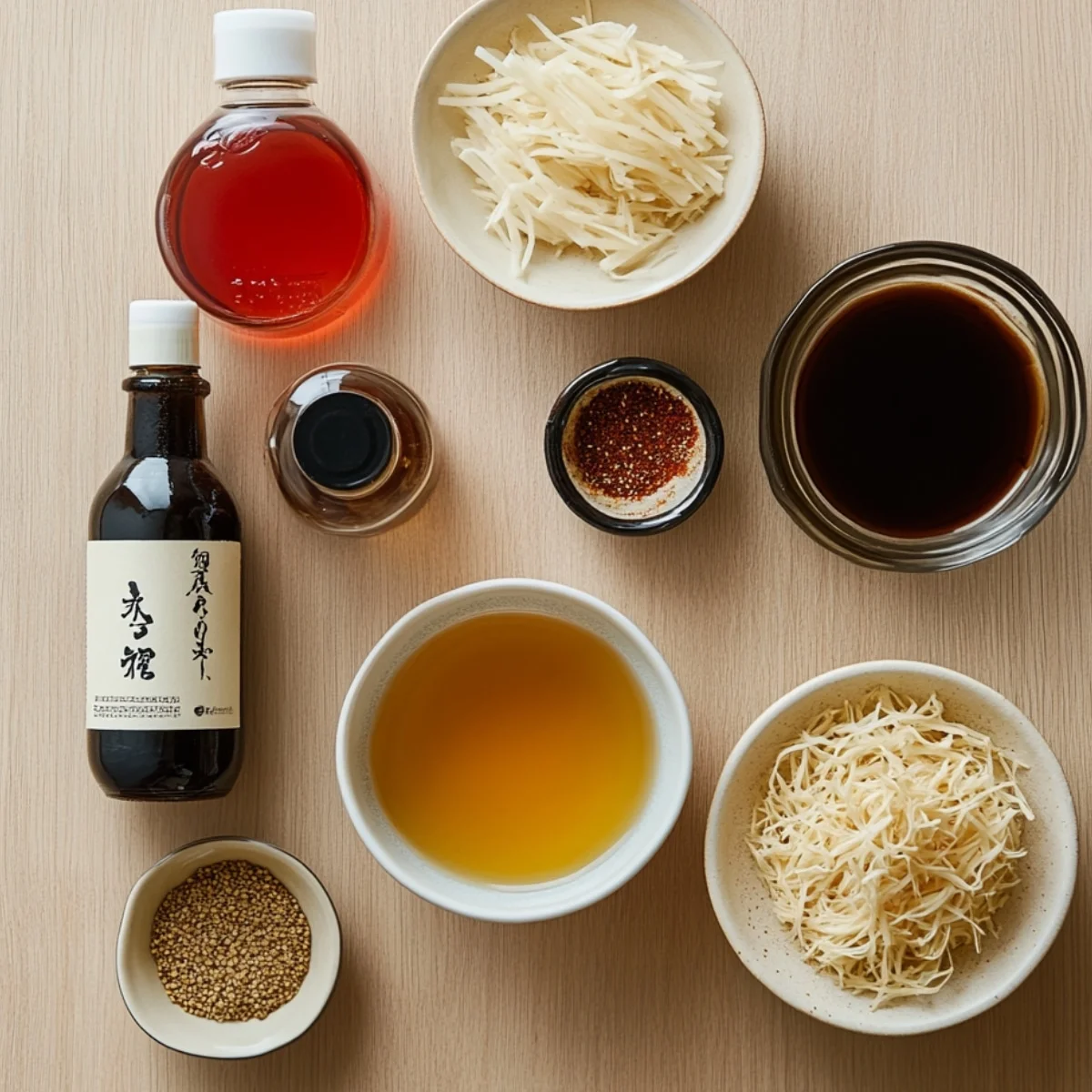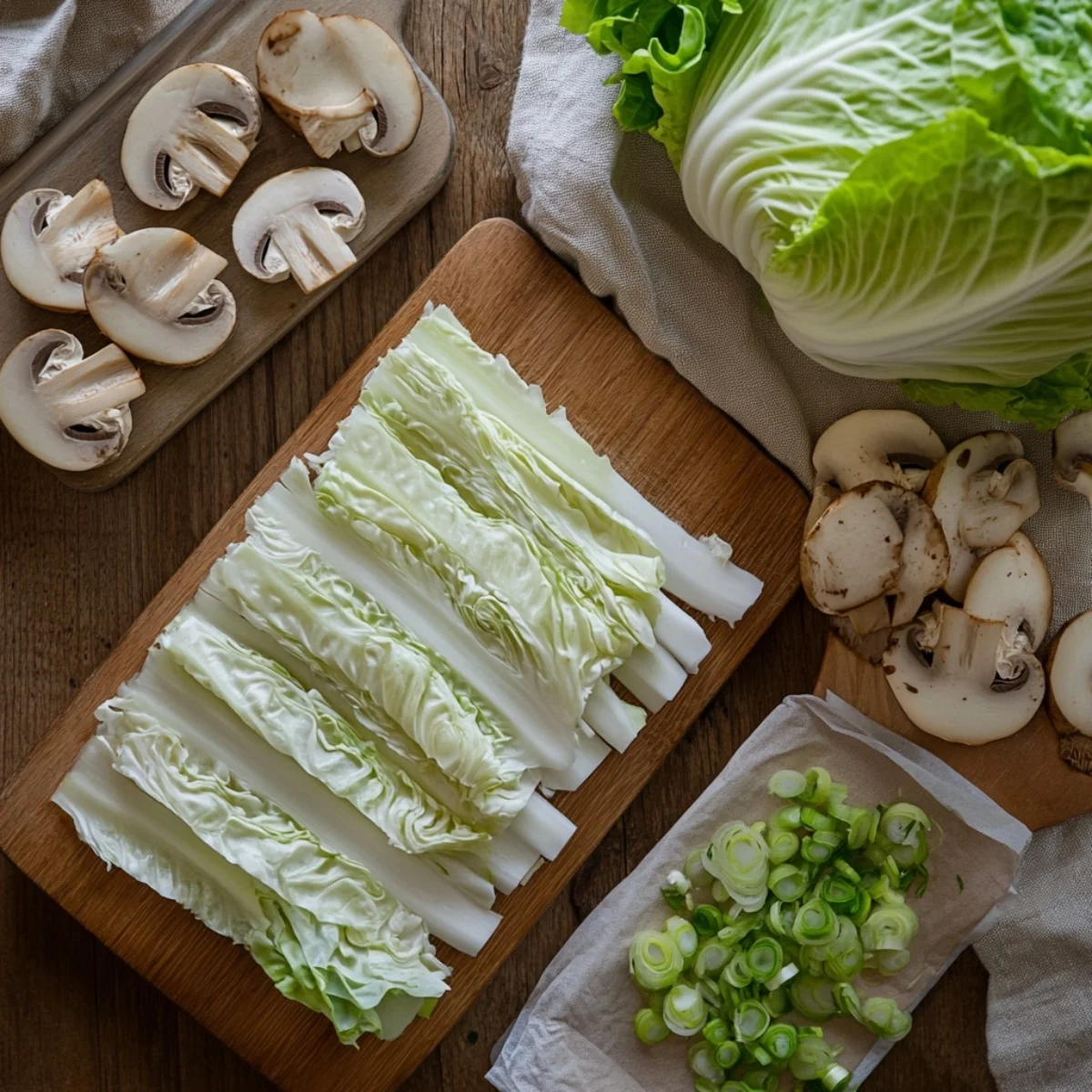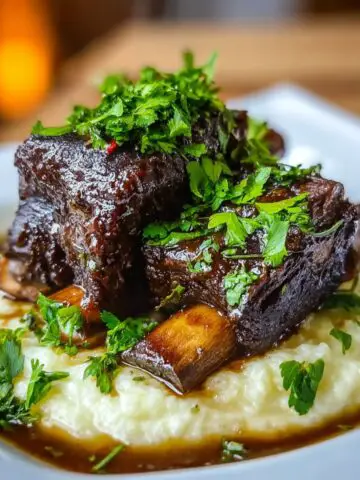In our kitchen adventures last month, Max and I discovered a dish that completely changed our family dinner game mille feuille nabe. This stunning Japanese hot pot looks fancy but is surprisingly simple to make. The name comes from the French pastry (thousand leaves) because you layer thin slices of napa cabbage and meat just like pastry layers! After trying different versions for three weeks straight (Max insisted!), we've perfected our method for creating this cozy, flavorful meal that's become our Friday night tradition.
Why You'll Love This Mille Feuille Nabe
After serving this dish at four different family gatherings (with zero leftovers every time!), I can tell you exactly why mille feuille nabe deserves a spot in your dinner rotation. Unlike regular hot pots where everything gets jumbled together, this version creates beautiful layers that cook differently - the cabbage on the bottom becomes silky soft, the middle layers stay tender, and the top keeps some crispness. It's like getting three different textures in one bite!
Max's favorite part is watching the transformation as it cooks - "Mom, it's magic soup!" he calls it as the tall stack of ingredients slowly collapses into the bubbling broth. The other thing I love about this dish is how it brings everyone to the table. There's something special about gathering around a steaming hot pot on chilly evenings that turns dinner into an event rather than just another meal.
Jump to:
- Why You'll Love This Mille Feuille Nabe
- Mille Feuille Nabe Ingredients
- How To Make Mille Feuille Nabe
- Substitutions
- Mille Feuille Nabe Variations
- Equipment For Mille Feuille Nabe.
- Storage Tips
- What to Serve with Mille Feuille Nabe
- Top Tip
- Mother's Japanese Connection
- FAQ
- A Beautiful Hot Pot Worth Sharing!
- Related
- Pairing
- mille feuille nabe
Mille Feuille Nabe Ingredients
The Must-Haves:
- Napa cabbage (fresh and crisp)
- Thinly sliced meat (pork belly works best)
- Firm tofu
- Green onions
- Shiitake mushrooms
- Enoki mushrooms
- Fresh ginger
The Flavor Base:
- Dashi stock (or chicken broth in a pinch)
- Soy sauce
- Mirin
- Sake (just a splash)
For Serving:
- Ponzu sauce
- Shichimi togarashi (Japanese seven spice)
- Cooked rice or udon noodles
How To Make Mille Feuille Nabe
The Prep Work:
- Wash cabbage leaves thoroughly
- Cut into squares that fit your pot
- Pat dry with paper towels
- Slice mushrooms and green onions
- Have all ingredients ready before assembly
The Layering Magic:
- Start with a cabbage leaf at the bottom
- Add a slice of meat
- Continue alternating cabbage and meat
- Tuck mushrooms between some layers
- Build your tower around the edges of the pot
- Leave the center open for broth
The Cooking Process:
- Pour prepared broth into the center
- Cover and bring to gentle simmer
- Cook for 15-20 minutes
- Don't stir (this preserves the layers)
- Serve directly from the pot
Substitutions
Protein Swaps:
- Pork belly → Thinly sliced beef (leaner option)
- Regular pork → Chicken thighs (lighter choice)
- Meat option → Firm tofu slices (vegetarian version)
- Traditional cuts → Seafood like shrimp (faster cooking)
Vegetable Options:
- Napa cabbage → Bok choy (different texture)
- Shiitake → Button mushrooms (more accessible)
- Fresh mushrooms → Dried (rehydrated) mushrooms
- Traditional greens → Spinach or kale (nutrition boost)
Broth Alternatives:
- Dashi → Vegetable broth (vegetarian friendly)
- Traditional base → Miso soup base (deeper flavor)
- Regular broth → Korean-inspired with kimchi
- Classic approach → Spicy version with chili oil
Mille Feuille Nabe Variations
Korean-Inspired:
- Add kimchi between layers
- Use gochujang in the broth
- Finish with sesame oil
- Serve with rice and banchan
Seafood Special:
- Layer shrimp and white fish
- Use kombu dashi as the base
- Add thin lemon slices
- Finish with fresh herbs
Vegetarian Delight:
- Double the mushroom varieties
- Add tofu and konnyaku
- Use vegetable dashi
- Incorporate seasonal vegetables
Spicy Comfort:
- Add chili oil to broth
- Include sliced jalapeños
- Use spicy bean paste
- Finish with chili threads
Equipment For Mille Feuille Nabe.
Must-Have Tools:
- Shallow, wide pot or donabe (Japanese clay pot)
- Long cooking chopsticks for arranging layers
- Sharp knife for thin, even slices
- Individual serving bowls
- Soup ladles for serving
Nice-to-Have Extras:
- Portable burner for tabletop cooking
- Cutting board with juice groove
- Mandoline for uniform vegetable slices
- Small dipping sauce dishes
Storage Tips
Immediate Storage (same day):
- Cool completely
- Store broth separately from solids
- Refrigerate in covered containers
- Best consumed within 24 hours
Reheating Method:
- Warm broth gently on stovetop
- Add solids for last few minutes
- Don't boil (causes vegetables to break down)
- Add fresh garnishes when serving
What to Serve with Mille Feuille Nabe
Finding the perfect sides for mille feuille nabe took several dinner party experiments, but we've finally nailed down the combinations that work best. The key is balance - this hot pot is already rich and flavorful, so simple accompaniments work better than competing strong flavors.
Our family's favorite pairing is definitely steamed short-grain Japanese rice. Its subtle flavor and sticky texture make it perfect for soaking up the savory broth. Max loves helping me rinse the rice before cooking, counting each rinse until the water runs clear. For guests, we sometimes offer ochazuke as a finishing course - pouring some of the hot pot broth over any remaining rice creates a satisfying end to the meal.
On the fresh side, we always include something crisp and acidic to balance the richness. A simple cucumber salad with rice vinegar and a pinch of salt takes just minutes to prepare and provides the perfect contrast. When Max's grandparents visit, I also add a small plate of tsukemono (Japanese pickles) that my mother-in-law makes - the tangy crunch complements the soft, savory layers of the hot pot beautifully.
Top Tip
The first time Max and I made mille feuille nabe together, we accidentally discovered what has become our signature twist. While carefully arranging our perfect layers one snowy Sunday afternoon, Max was dancing to his favorite song and bumped the table, sending a whole bunch of green onions tumbling into the pot all at once rather than being neatly arranged between the layers as I'd planned.
I remember the look of panic on his seven-year-old face, thinking he'd ruined our dinner. "Mom, I broke it!" he cried. But rather than starting over (we were both too hungry and it was already getting late), we decided to just leave them there, standing upright in the center of the pot, and continued building our layers around them.
To our complete surprise, those green onions in the center created an incredible flavor infusion that we never would have discovered otherwise. They essentially created a flavor bomb that perfumed the entire broth with amazing oniony goodness as they slowly cooked down. The result was so much better than our previous attempts that Max proudly declared it wasn't a mistake at all but "cooking genius!"
Now we deliberately create what Max calls "the green onion chimney" - a tight bundle of green onions placed upright in the center well of the pot where the broth goes. As the nabe cooks, the onions gradually soften and infuse everything with their flavor. Guests always ask about this unusual technique, and Max loves telling the story of his "famous cooking accident.
Mother's Japanese Connection
The first time I ever tasted mille feuille nabe wasn't actually in a restaurant, but in my childhood home. My mother had become close friends with Yumiko, a Japanese exchange student who lived with us for a year when I was just a teenager. On cold winter nights, Yumiko would transform our kitchen with this magical layered hot pot that looked nothing like the American meals we were used to.
Twenty years later, when I started teaching Max about different cuisines, I called my mother for Yumiko's recipe. To my surprise, Mom had kept in touch with her all these years and arranged a video call where Yumiko herself walked us through the proper layering technique. Max was mesmerized watching her hands work so quickly, stacking the cabbage and meat in perfect alternating layers.
What touched me most was when Yumiko told Max that in Japan, hot pot dishes like nabe are about more than just food - they're about bringing family together. "When everyone sits around the same pot, sharing the same meal, there is connection," she explained in her soft voice. Max nodded seriously and declared, "Just like when we make cookies together, but for dinner!"
FAQ
Why is it called a Mille-Feuille Nabe?
The name combines French and Japanese terms - " mille feuille nabe" means "thousand leaves" in French, referring to the many layers of cabbage and meat, while "nabe" is Japanese for "hot pot." The name perfectly describes the beautiful layered appearance that resembles the classic French pastry with its many delicate layers.
What is nabe made of?
Traditional nabe consists of a flavorful broth with various ingredients cooked together in one pot. Mille feuille nabe specifically features thinly sliced napa cabbage and meat arranged in alternate layers, creating a stunning visual effect as well as unique textures and flavors as everything cooks together.
What side dishes complement Mille Feuille Nabe?
Simple sides work best with this dish. We love serving steamed rice to soak up the flavorful broth, a small cucumber salad for freshness, and tsukemono (Japanese pickles) for a tangy contrast. For dipping the cooked meat and vegetables, a small bowl of ponzu sauce mixed with grated daikon adds the perfect finishing touch.
What kind of meat for nabe?
Thinly sliced pork belly is traditional for mille feuille nabe, but paper-thin beef slices (especially fatty cuts like ribeye) work beautifully too. We've also made it with chicken thighs sliced very thin. The key is using meat that's sliced paper-thin so it cooks quickly in the hot broth and releases flavor into the layers.
A Beautiful Hot Pot Worth Sharing!
Now you have all the secrets to creating perfect mille feuille nabe at home - from the proper layering technique to our special "green onion chimney" trick. This stunning Japanese hot pot proves that sometimes the most impressive dishes are built from simple ingredients and techniques.
Looking for more family-friendly recipes? Try our 10-Minute Easy Garlic Cheese Rolls that pair perfectly with this hot pot. Craving more international flavors? Our Italian Stromboli Recipe: Easy, Traditional & Delicious has been a weekend favorite. Need another quick dinner option? Our Easy Chicken Cordon Bleu Recipe transforms an elegant classic into a doable weeknight meal.
Share your hot pot success! We love seeing your family gathered around the table!
Rate this recipe and join our cooking community!
Related
Looking for other recipes like this? Try these:
Pairing
These are my favorite dishes to serve with Mille Feuille Nabe
mille feuille nabe
Equipment
- Shallow wide pot / Donabe (Essential for cooking and presentation)
- Long cooking chopsticks (Helpful for arranging layers)
- Sharp knife (For slicing meat and vegetables thinly)
- Cutting board (Preferably with a juice groove)
- Soup ladle (For serving broth)
- Individual serving bowls (For guests)
- Portable burner (For table-side cooking)
- Mandoline (For perfectly uniform vegetable slices)
- Dipping sauce dishes (For serving ponzu or other sauces)
Ingredients
- 1 large head Napa cabbage Washed - leaves separated
- 400 g Pork belly slices - Thinly sliced
- 200 g Firm tofu - Cubed
- 3-4 pieces Shiitake mushrooms - Stems removed sliced
- 1 bunch Enoki mushrooms - Trimmed
- 2-3 stalks Green onions - Extra for "green onion chimney"
- 1 thumb sized piece Fresh ginger - Sliced thin
- 4 cups Dashi stock - Or substitute chicken broth
- 2 tablespoons Soy sauce
- 2 tablespoons Mirin
- 1 tablespoon Sake - Optional
- As needed Ponzu sauce - For dipping
- As needed Shichimi togarashi - Optional for topping
- Optional Cooked rice or udon - For serving alongside
Instructions
- Wash, cut, and prepare all fresh ingredients first
- Neatly stack cabbage and meat slices in layers
- Place green onions upright in the pot's center
- Mix dashi, soy sauce, mirin, and sake for broth
- Simmer the layered hot pot gently without stirring
- Ladle the broth and ingredients into serving bowls



















Leave a Reply